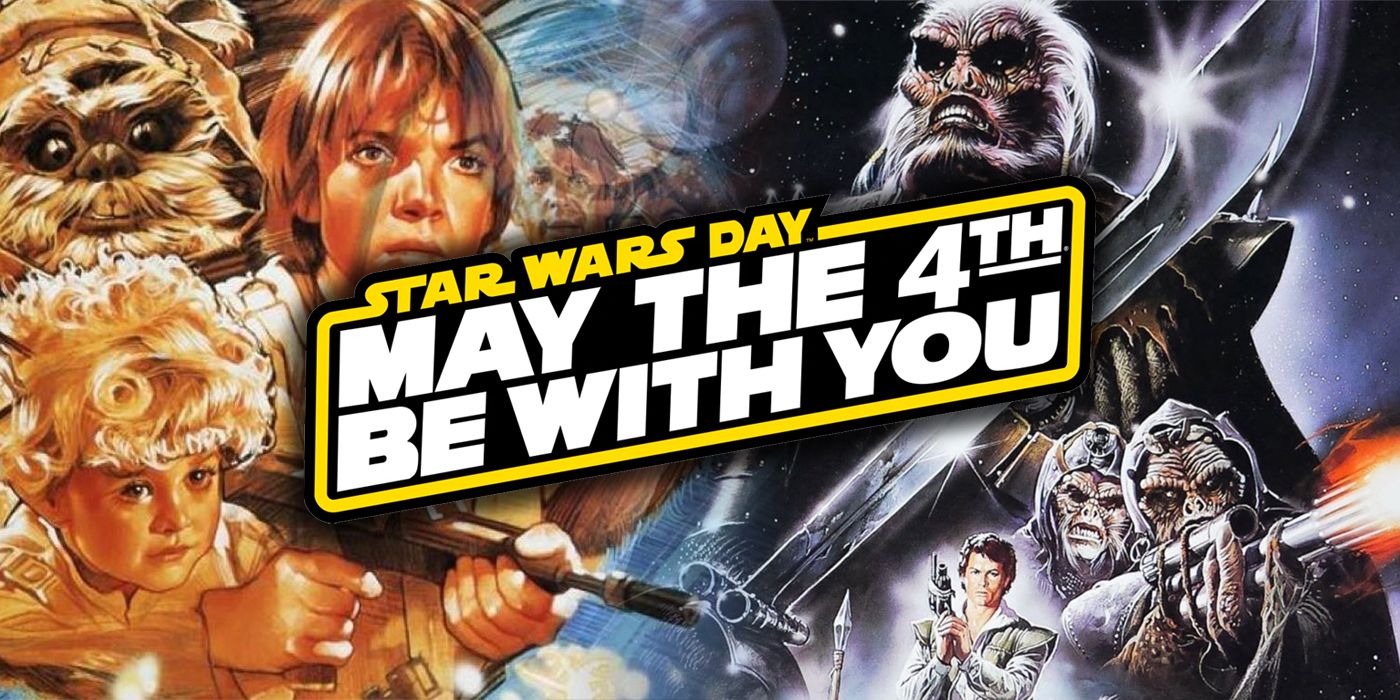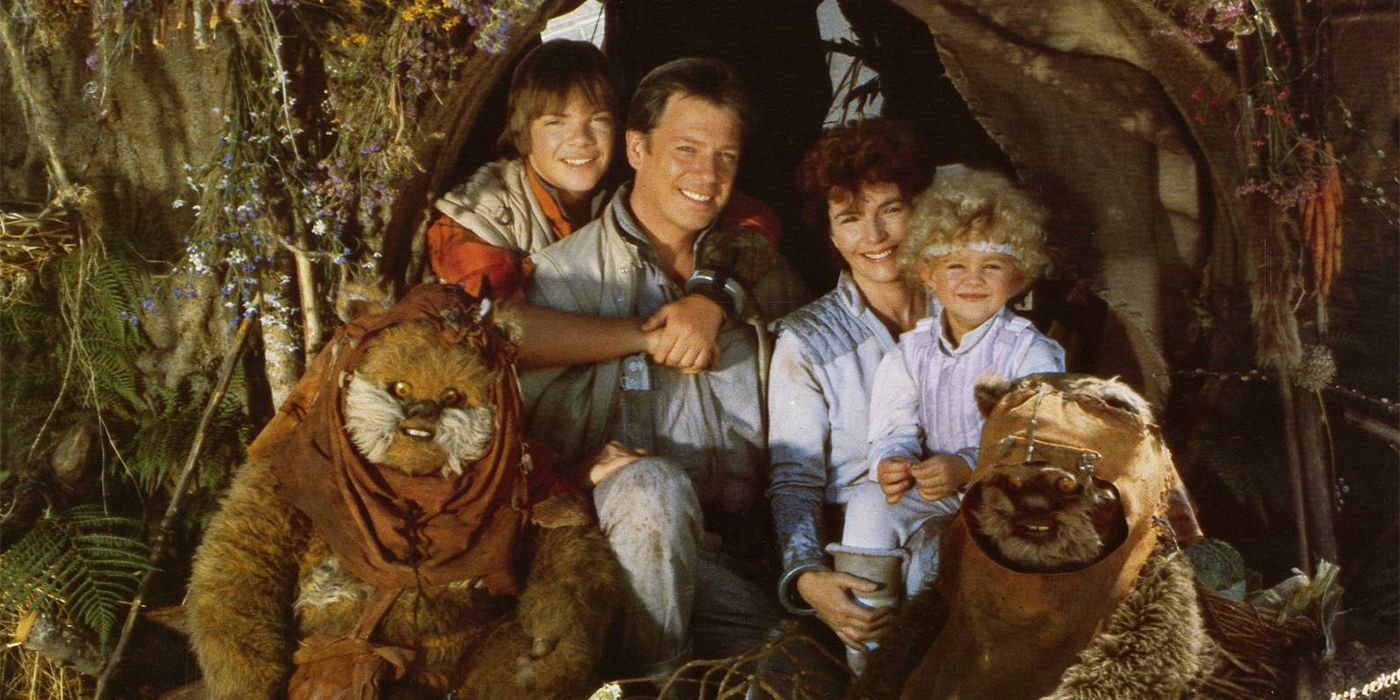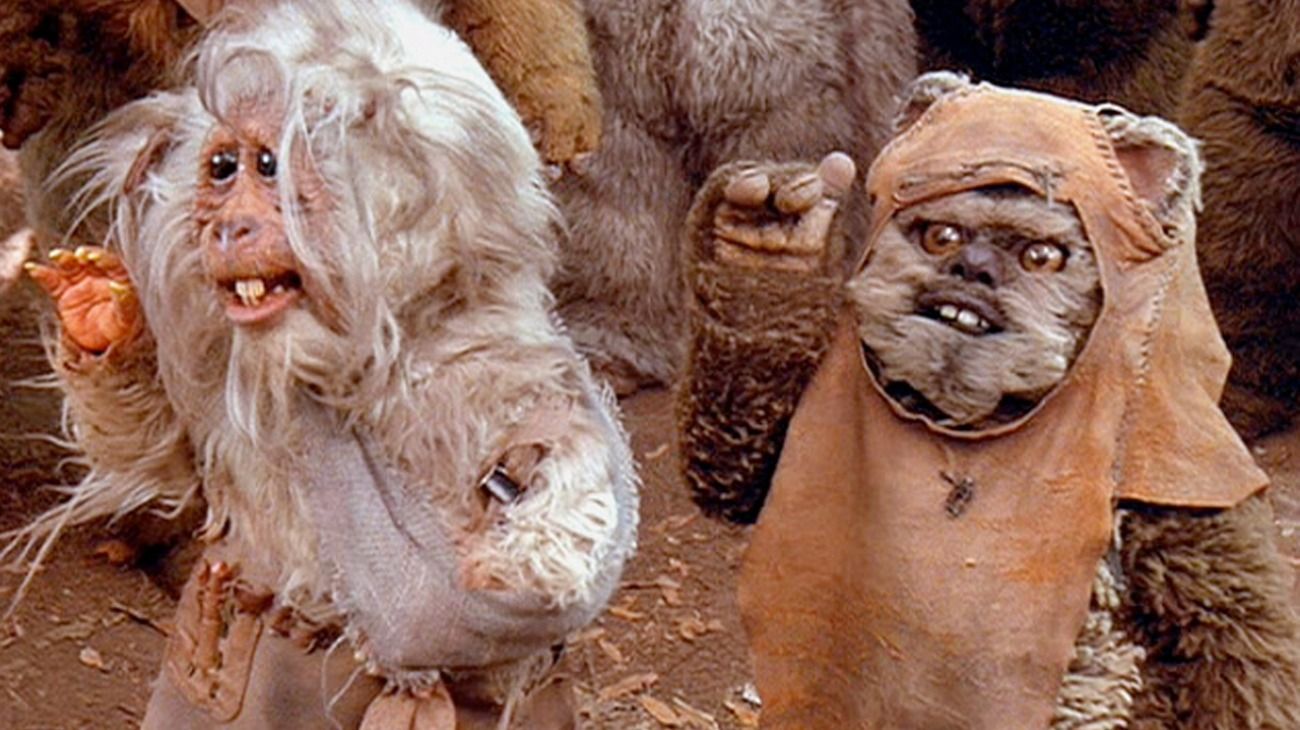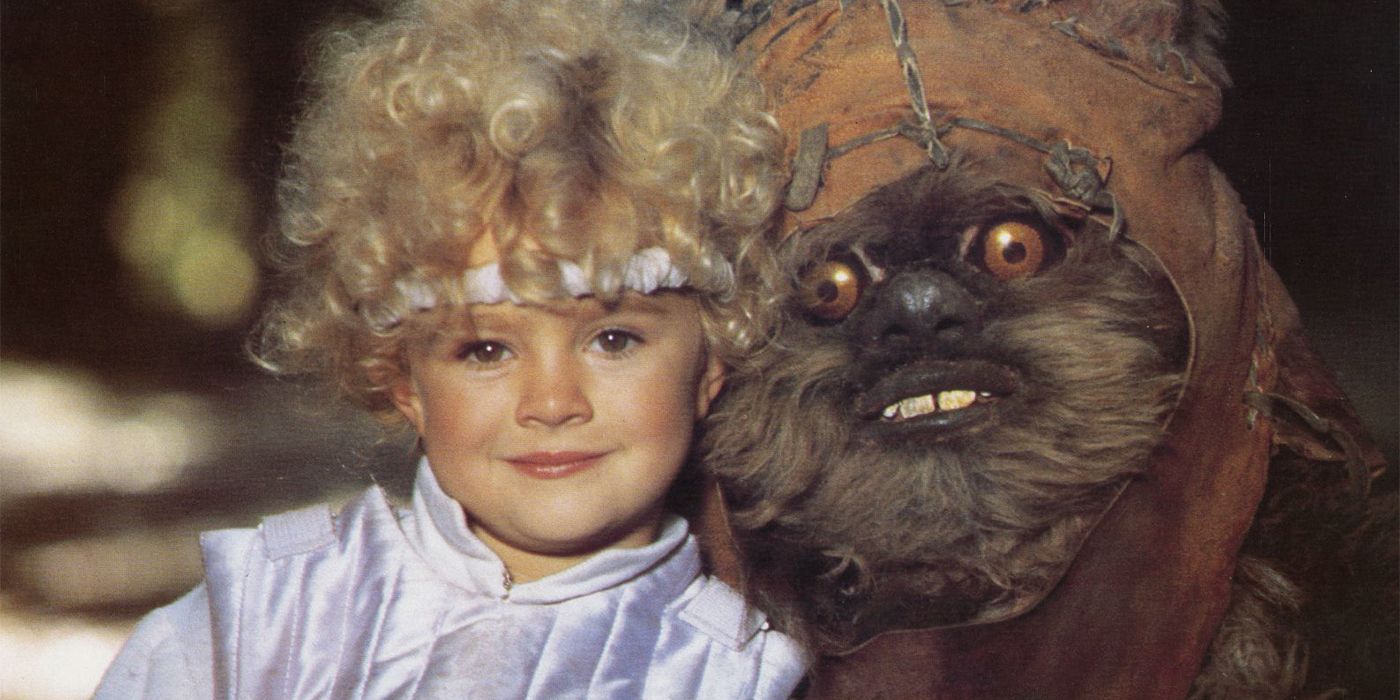It’s hard to imagine a time where a new Star Wars project wasn’t announced every other day, but in the mid-1980s the franchise was beginning to loosen its dominance on pop culture. While Return of the Jedi topped the box office in 1983, new projects within the galaxy far, far away were scant, with only the core Marvel comic book series and a few video game adaptations keeping the saga alive. The breakthrough novel Heir to the Empire from author Timothy Zahn wouldn’t be released until 1991, and the buzz on any new film projects had all but died as George Lucas' enthusiasm for making a prequel trilogy had seemingly waned.
Given the minimal projects on the horizon, Lucasfilm turned towards its most sustainable asset — the Ewoks. The furry forest creatures were one of the more divisive elements of Return of the Jedi, with many audiences and critics alike agreeing that they were a step too far into the cutesy realm and existed solely to sell merchandise. Yet, that’s exactly what Lucasfilm did — an Ewoks cartoon series debuted in 1985, with Ewok plush dolls, Ewok children’s books, and Ewok Marvel comics all following. At this point in time, the Ewoks were the face of Star Wars.
As Ewok mania reached new heights, Lucasfilm returned to the world of Star Wars television for the first time since the infamously terrible The Star Wars Holiday Special aired in 1978 (and was subsequently never released again). With a plethora of costumes leftover from Return of the Jedi, Lucasfilm produced two Ewok-centric television films for release on ABC and signed Warwick Davis to return for his role as Wicket, the Ewok that befriends Princess Leia. Caravan of Courage: An Ewok Adventure aired on November 25, 1984, and the follow-up Ewoks: The Battle for Endor aired a year later on November 24, 1985.
George Lucas himself had somewhat learned his lesson from the disaster of The Holiday Special and took a slightly more active role in developing the Ewok TV films. With the intention of making something that would appeal to younger fans including his own children, Lucas wrangled a team together that consisted of holdovers from Return of the Jedi (including production coordinator and future director Joe Johnston) and television professionals adept at working in children’s media. Despite the booming Star Wars brand, the films’ productions were about as primitive as the Ewok technology, using matte paintings, forced perspectives, stop-motion animation, and other special effects common among made-for-TV movies for the course of the shoot in Marin County.
Caravan of Courage introduced the Towani family, a group of human travelers that crash land on the Forest Moon of Endor prior to the events of Return of the Jedi. The children Mace (Eric Walker) and Cindel (Aubree Miller) are separated from their parents and lost within the mythic realm of Endor (which now has a more high fantasy feel not dissimilar from Labyrinth or The Dark Crystal). Of course, this means they’ll eventually run into the Ewoks, including Leia’s friend Wicket (Davis) and his band of friends. The result is a fairy tale-like quest to find the elder Towanis during which the heroes encounter magical creatures like the Gorax, a troll-like creature seemingly inspired by J.R.R. Tolkien’s Orcs and Cave Trolls.
At the risk of spoiling a children’s film that’s over 35 years old, we’ll say that the 1985 follow up Ewoks: The Battle for Endor takes a much darker turn, beginning with a sequence of horror that rivals Revenge of the Sith’s Order 66 montage or the mass slaughter at the end of Rogue One. Seriously. There were reportedly plans for further installments, but growing production costs and Lucasfilm’s turn towards other projects shuttered any plans for a conclusion to the trilogy.
Here’s the thing: the two Ewok films aren’t good. They’re not the colossal miscalculation that The Star Wars Holiday Special is, but rather cheaply made cash grabs that simply don’t hold up. At the same time, they’re totally worth watching at least once for Star Wars fans curious about this strange point in the saga’s history. Now that the two films are finally available on Disney+, fans have the chance to incorporate them in their “May the 4th Day” binge-viewing.
For one thing, the Ewok movies have been widely unavailable until their April debut on Disney+. Besides a scant release on Laserdisc in 1990 and a double-sided DVD (remember those?) in 2004, they never saw an official release and were never offered for purchase or rental on streaming services. Perhaps Lucasfilm was embarrassed of the quaint productions and didn’t want to tarnish the Star Wars name, or perhaps the digital restoration proved to be too expensive. More likely, they figured nobody really cared and that even hardcore fans and completionists wouldn’t notice their absence.
Yet, both Caravan of Courage and Battle for Endor help explain the trajectory of the Star Wars franchise. Long before “Canon” became a headache and the timeline was tracked obsessively, projects that bore little resemblance to anything in the universe could still see the Star Wars name slapped upon them officially.
The films also explain why it took another 35 years before a live-action Star Wars television project came to fruition: it's expensive! Meticulous craft is poured into creating every creature, ship, and location for each of the theatrical films, and that attention to detail in the world building is hard to emulate on a weekly television series. While the production quality is pretty immaculate on The Mandalorian, that show came equipped with a Disney budget and was the flagship series for the launch of a new streaming service that now boasts over 100 million worldwide subscribers. Yet even The Mandalorian had to prove its worth by creating technology that made the budget of a CG-filled Star Wars series manageable.
Given the production constraints on the Ewoks TV movies, the creature work and designs are all pretty impressive. Leaning more into the fantasy aspect of the universe actually differentiates the two films from the vast number of Star Wars ripoffs produced by Roger Corman and other imitators at the time. They also came at a time in which popularity for The Muppets was at an all-time high thanks to Jim Henson’s foray into film with The Muppet Movie in 1979, The Great Muppet Caper in 1981, The Dark Crystal in 1982, Muppets Take Manhattan in 1984, and later Labyrinth in 1986. It’s hard to understate the dedication and precision required for Muppet performers, and that level of meticulous craft is worth observing even on a lesser project.
They’re also worth a look to see Warwick Davis’s contributions to the saga. Davis is one long time performer who is always bound to return to the Star Wars universe, having followed up his Return of the Jedi debut with cameos in several films in both the prequel and sequel trilogies. The Ewok movies came shortly before Davis got a starring role in George Lucas’s other live-action fantasy project Willow, and the growing appreciation for that film with its planned continuation might be even more reason to watch more of Davis' work in these specials.
Wicket’s characterization is slightly different from his appearance in Return of the Jedi. As The Holiday Special proved, having furry creatures speak only in an alien language without subtitles was going to be a barrier. As a result, Wicket speaks English (or in the Star Wars canon, "basic"). It’s awkward but certainly helps make the dopey guy as close as the Ewoks can come to having a leading character. Wicket's friendliness towards humans and his naïveté made him Return of the Jedi’s comic relief, and it's interesting to see those traits reimagined as the protagonist who must prove himself within his tribe.
Disney+ has gradually added more vintage Star Wars projects including Genndy Tartakovsky’s brilliant Star Wars: Clone Wars, the original Ewoks animated series, and The Holiday Special’s animated segment The Story of the Faithful Wookiee, which saw the debut of Boba Fett. Yet the archive is still incomplete, with the animated Droids series, the unaired Star Wars: Detours show from Seth Green and Matthew Senreich, and several select behind-the-scenes documentaries still lost to time. Star Wars fans will also note that the unedited versions of the original trilogy that don’t include the Special Edition changes are also missing.
Expanding the Disney+ archive to feature forgotten projects from over the years (including a number of Disney films with sensitive subject matter) will take time. However, it may lead to a productive look at how film and television have changed over the past hundred years. And the Ewok films in their own way they help build a broader understanding of what made-for-TV movies looked like in their era. In a time well before "streaming" or "digital" releases were a thing.
So for Star Wars fans who’ve breezed through the saga countless times, Caravan of Courage: An Ewok Adventure and Ewoks: The Battle for Endor are both solid alternative “May the 4th” viewing options. It’s worth looking into the past to appreciate the plethora of Star Wars media now at our disposal, and perhaps a bad episode of The Mandalorian will seem a little more redeeming in hindsight once you’ve witnessed Wicket poke at a stop motion monster.




